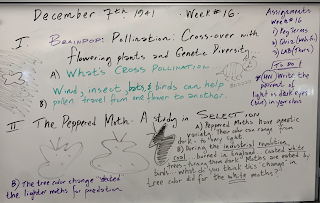Week #17 wrap up
- Life on Earth diversified into the complex animal phylum we see today in a relatively short period of time, about a half billion years ago. It’s called the Cambrian Explosion. It was probably triggered by the buildup of oxygen in Earth’s atmosphere from photosynthesizing bacteria and the forerunners of plants.
- About a third of a billion years ago (300 million years ago) vast tropical forests were repeatedly buried which would lead to the coal, oil, and gas deposits upon which economies depend today.
- Current Events: The FUSION breakthrough, announced in the news this week, is an important leap forward in meeting our power demands. Coal, oil, and gas are FOSSIL FUELS - which means the supply is finite.
- “October Sky” (“The Rocket Boys”) by Homer Hickam not only shows the scientific method in action but also illustrated the problems with fossil fuels. West Virginia has polluted half of its rivers through its coal mining practices. “Flat Topping” of mountains has destroyed much of the ecosystem as the landscape is opened to expose ancient coal seams.
- Burning coal, oil, and gas adds CARBON to Earth’s atmosphere, speeding climate change by trapping more SOLAR RADIATION.
- FOSSILS give us insight into EVOLUTION through the Law of Superposition. Thanks to the ROCK CYCLE there are three, main, types of rock - Sedimentary, Igneous, and Metamorphic. Sedimentary rock, usually, has older layers below younger layers. By studying the FOSSILS found in each layer we can put together a timeline of how life has changed and diversified over the last half a billion years.
- Winter Solstice - Wednesday, at 1:48 pm - The sun begins its return to the Northern Hemisphere! (Whoo hooo!) - It’s the first day of Winter and the shortest day of the year :-)






















































